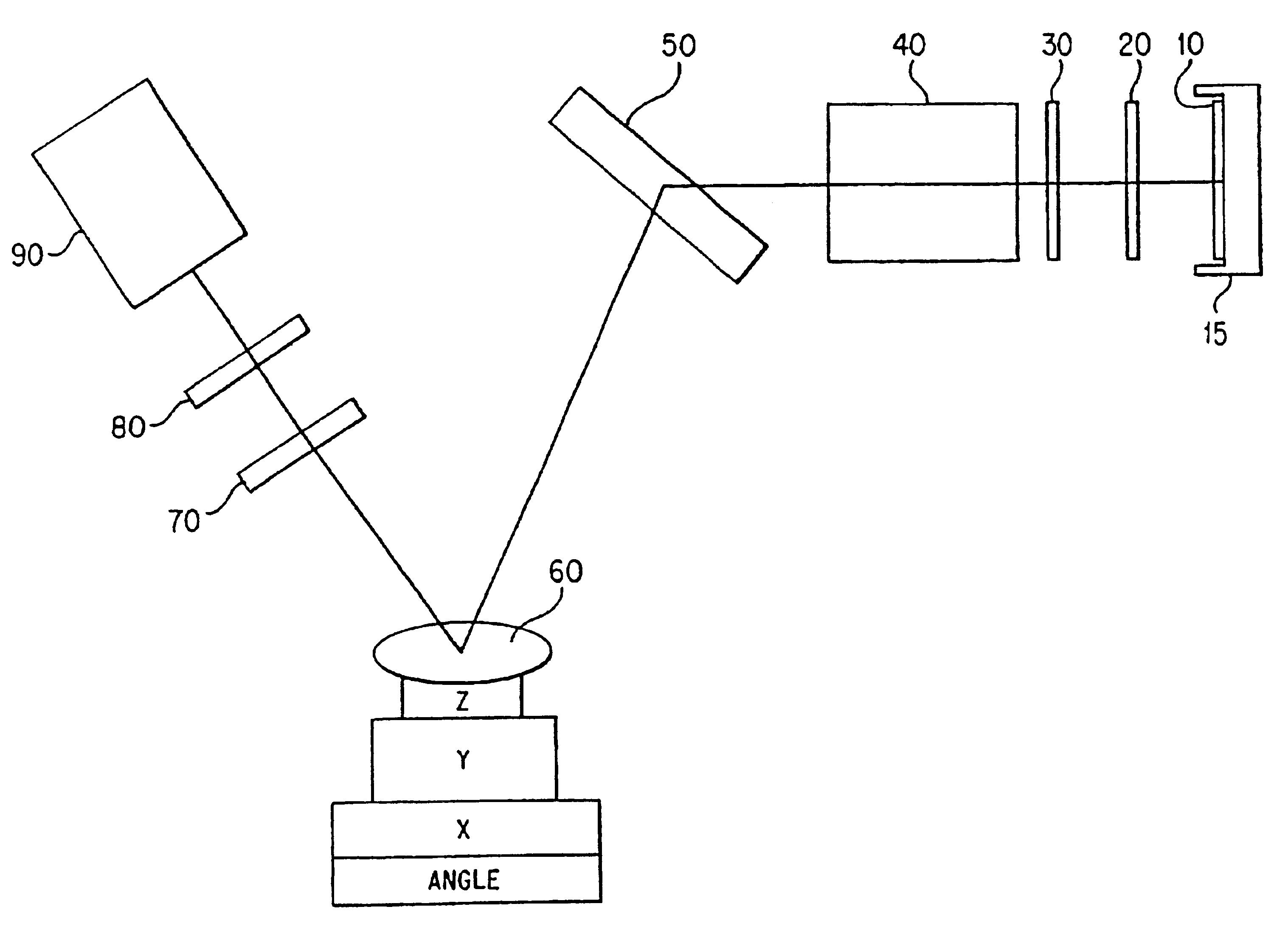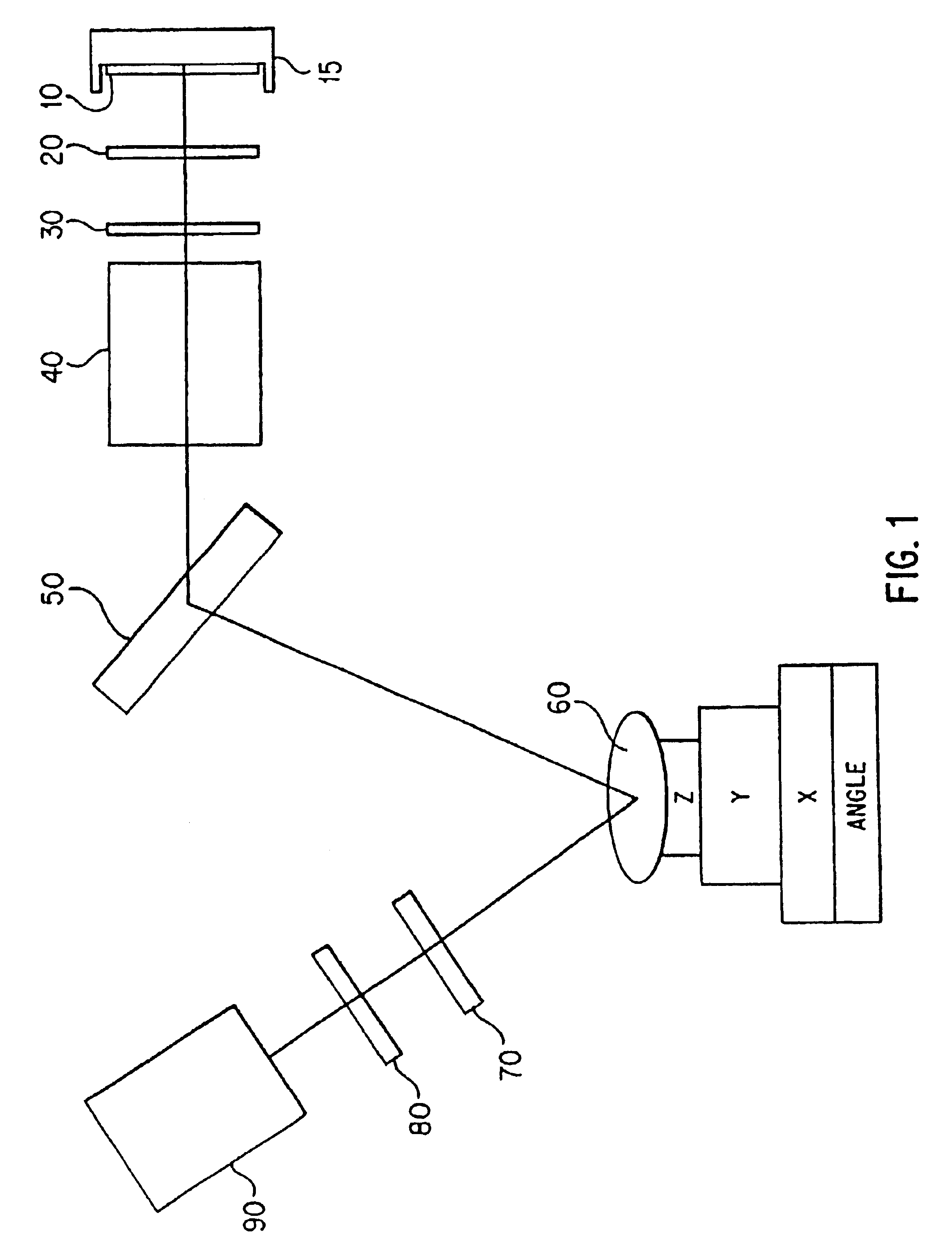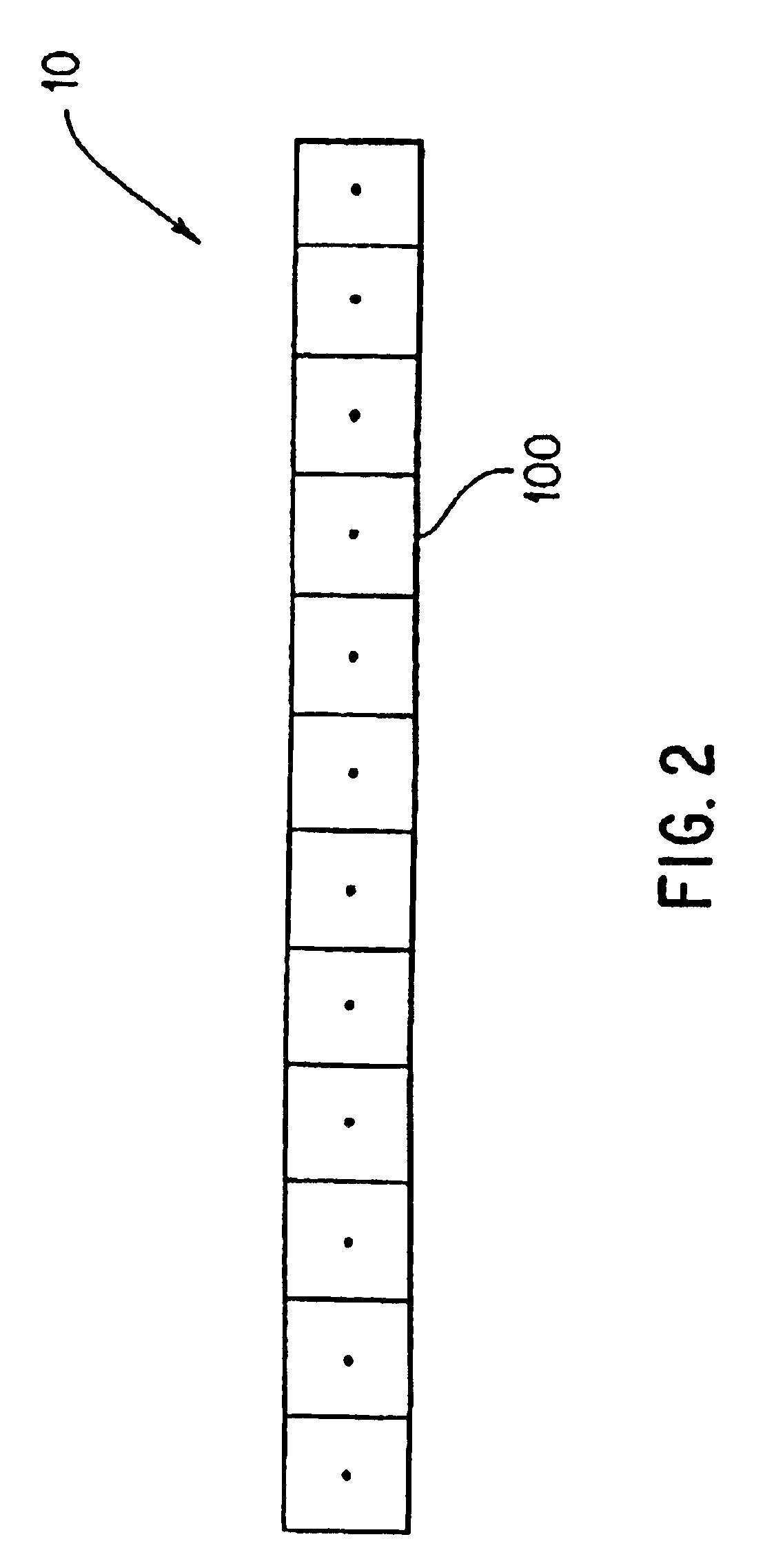Optical resonance analysis system
a technology of optical resonance and analysis system, applied in the field of optical resonance analysis system, can solve the problems of increasing the spr linewidth and grating performance anomalies, and achieve the effect of low cos
- Summary
- Abstract
- Description
- Claims
- Application Information
AI Technical Summary
Benefits of technology
Problems solved by technology
Method used
Image
Examples
embodiment
Utilizing Wavelength Scanning
FIG. 9 shows an embodiment of the invention directed toward wavelength scanning. Light emitted from the source 10 travels through an optical system 130 and impinges on a sensor 60. Light reflected from the sensor 60 then travels the detector 90. The wavelength scanning means may comprise the optical system 130 which may be a spectrometer, a grating, an acousto-optical tunable filter, a Fabrey-Perot or Fourier transform interferometer, a liquid crystal filter, a tilting dielectric filter, a linear variable filter, a Lyot filter, or a tunable laser. Alternatively the wavelength scanning means may comprise the source 10 and the optical system 130, where the source is a linear array as shown in FIG. 2 or a two dimensional array as shown in FIG. 3 and the individual elements of the array produce different wavelengths. In this particular embodiment the optical system 130 serves to focus the different wavelengths onto appropriate areas of the sensor.
PUM
| Property | Measurement | Unit |
|---|---|---|
| optical resonance analysis | aaaaa | aaaaa |
| wavelengths | aaaaa | aaaaa |
| fixed wavelength | aaaaa | aaaaa |
Abstract
Description
Claims
Application Information
 Login to View More
Login to View More - R&D
- Intellectual Property
- Life Sciences
- Materials
- Tech Scout
- Unparalleled Data Quality
- Higher Quality Content
- 60% Fewer Hallucinations
Browse by: Latest US Patents, China's latest patents, Technical Efficacy Thesaurus, Application Domain, Technology Topic, Popular Technical Reports.
© 2025 PatSnap. All rights reserved.Legal|Privacy policy|Modern Slavery Act Transparency Statement|Sitemap|About US| Contact US: help@patsnap.com



